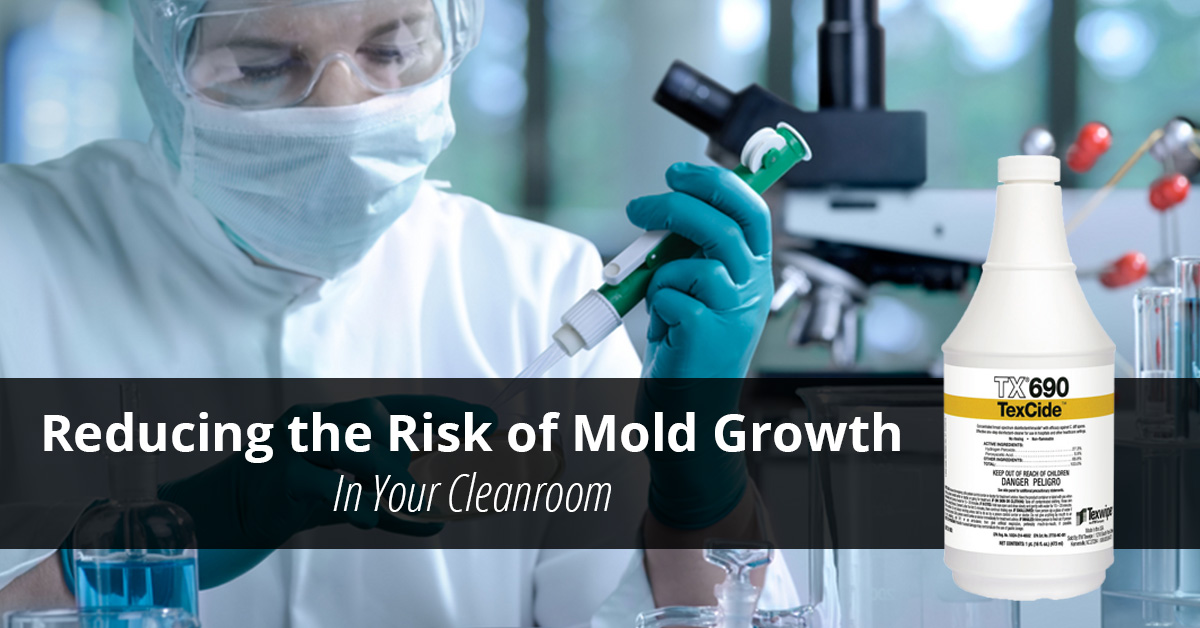Reducing The Risk of Mold Growth in Your Cleanroom
Posted by SOS Cleanroom on 14th Dec 2016

When you operate a cleanroom, you’re constantly on the alert to manage the risks and hazards of contaminants causing harm to your product. While contaminants are of almost infinite types and come from infinite sources, in this blog post, we’ll look at the risk of mold growth and talk about some of the strategies that you can employ to reduce this risk in your cleanroom.
Identify conditions that are favorable to the introduction and growth of mold
There are multiple ways that mold can find its way past all your barriers, but almost all these factors fall into two categories: Human behavior and environmental factors.
First, the human behavior element is important to investigate in order to ensure that you’re not inadvertently allowing mold an access point. Be watchful of items brought into the cleanroom, and have robust policies that govern personnel practices. For instance, an outbreak in one cleanroom was traced to an operator with an athlete’s foot infection. While you can’t ever completely seal out the risk factors that come from people, it’s important to cover your bases as comprehensively as possible.
Second, the environment itself is an important feature to consider. The design and maintenance of your facility can contribute to either favorable or unfavorable conditions for mold growth. An article from the February 2009 issue of CleanRooms magazine identified the following environmental factors that contribute to mold growth:
- Deficient room pressurization
- Vibrations from construction
- Poor engineering designs related to sprinkler systems and light fixtures
- Increases in ambient temperatures
- Issues with items brought into cleanrooms
Fight mold at the source
Mold and other fungi are pesky little fighters that can be difficult to eradicate completely. If they are allowed to grow unchecked, their multiplication can be incredibly aggressive. Something as simple as a ceiling tile that is hiding mold growth behind it can be a source of tremendous mold multiplication, putting your environment at a greater risk as these contaminants find their way into the air. Mold is great at hiding, and it can sometimes be a puzzle to identify just where this reservoir of contamination is located. Check places like door kick plates, cart wheels, boxes, degraded flooring, and any porous wall surfaces.
Use the right products to get rid of mold
With advances in cleanroom technology happening all the time, it only makes sense to have the best, most effective products at your disposal for removing mold. One of our favorite recent breakthroughs is Dilute Hydrogen Peroxide (DHP) Antimicrobial Cleaning systems. This technology produces a natural disinfectant using humidity and oxygen to kill mold and other microbes, such as as viruses, bacteria, and other fungi. A DHP unit covers 1500 square feet of space.
Another product we love for fighting mold is the TX690 TexCide Sporicidal Disinfectant from Texwipe. This is a one-step sporicidal cleaner and disinfectant that uses a blend of 27.3% hydrogen peroxide and 5.9% peroxyacetic acid. It has been shown in tests to work better against mold than quaternary ammonium salts, phenol A and B, 10% bleach, and 70% isopropyl alcohol.
SOS Cleanroom wishes you the best of success in your fight against cleanroom mold!
[Source: CleanRooms Feb2009 issue: Cleanroom Disinfection: Evaluating the activity of disinfectants against fungi: Choose an antimicrobial chemistry that addresses mold isolates specific to your cleanroom operations, by Jim Polarine, Jr., John Macauley, Peter Karanja, Dan Klein, and Abigail Martin, STERIS Corp.]
